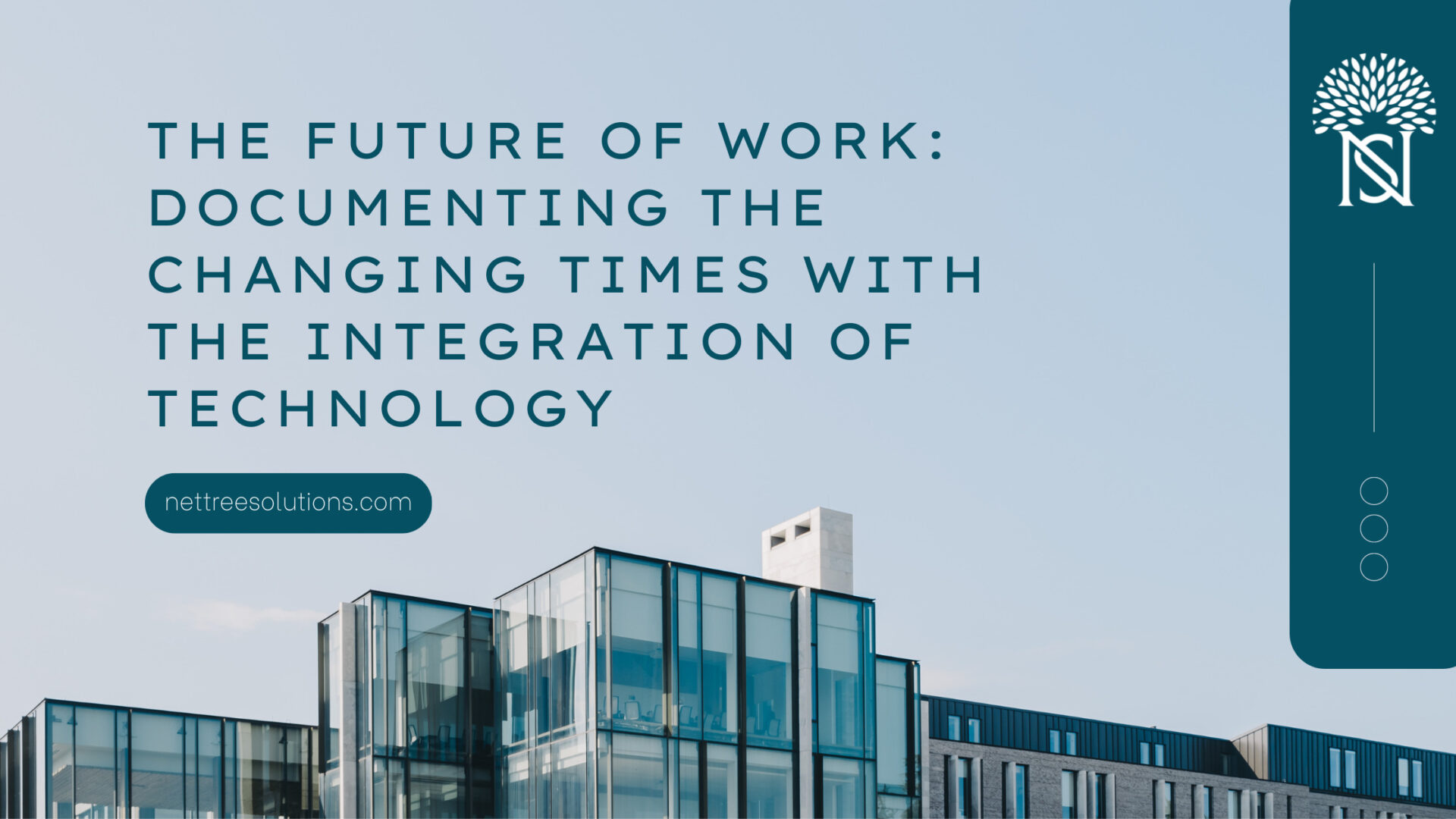Introduction
The shifting tides of technology and the evolving economic landscape instigate a profound metamorphosis in the employment terrain. Central to this transformative journey is the rapid ascent of Work Tech, alternatively recognized as Work Technology. This vibrant domain encompasses a diverse array of state-of-the-art instruments and inventive remedies ready to redefine how organizations navigate the complex sphere of workforce administrative strategies affecting the ways in which companies hire professionals all across the globe. In this comprehensive examination of the evolving dimensions of labor, we will embark on a multifaceted exploration of Work Tech and its far-reaching consequences for the times ahead paving way for more streamlined talent acquisition for professional recruitments in USA, UK or all other major countries.
Overview of the Changing Landscape

How we conduct business and navigate the professional realm has recently undergone a profound transformation. The once steadfast office buildings we relied upon are succumbing to the rise of progressively dynamic, remote, and technology-centric arrangements. The leaders in human resources (HR) and talent acquisition (TA) are playing a crucial role in assisting their organizations in adapting to these advancements. They assume a pivotal role in shaping the trajectory of labor by, amidst other endeavors, enticing exceptional individuals and implementing innovative concepts that enhance the work environment for all.
The significance of technology within this evolving framework cannot be exaggerated. The advent of cloud-based collaboration tools and recruitment platforms powered by artificial intelligence has undeniably exerted a profound influence on our operational procedures, our ability to entice prospective employees, and our capacity to effectively oversee our current workforce. As our understanding of Work Tech deepens, we shall come to appreciate its profound impact on human resources and recruitment.
Importance of Work Tech

Work technology as a field is becoming increasingly important in this dynamic environment. This particular domain encompasses a vast array of technologies, which include software that has been developed with the primary objective of talent acquisition, tools that are intended to foster employee engagement, platforms that are solely dedicated to analytics, and various other similar tools and technologies. The aforementioned tools have been intricately crafted with the intention of augmenting diverse facets of human resources and talent management. The primary objective of these operations is to enhance efficiency through the implementation of strategies that are informed by data-driven decision-making. The deliberate utilization of Work Tech exhibits the capability to cultivate heightened efficacy, diminished expenditures, and enhanced employee contentment.
HR and Talent Acquisition Leaders
Role in Shaping the Future of Work

The role of global HR professionals and talent acquisition leaders is of utmost importance in shaping the course of the contemporary workplace. It is their duty to establish the prevailing atmosphere in the realm of adapting to dynamic circumstances. Amidst the global upheaval, human resources leaders have found themselves compelled to swiftly adapt in order to confront the distinctive obstacles presented by the realm of remote work, scarcity of skilled personnel, and the prevailing climate of economic unpredictability.
The purview of human resources and talent acquisition leaders transcends the mere act of recruitment. It falls upon their shoulders to cultivate a professional milieu that nurtures ingenuity, cooperation, and the welfare of their employees. Therefore, the decisions and strategies formulated by individuals hold paramount significance in determining an organization’s capacity to flourish within the rapidly evolving, technology-centric terrain that lies ahead.
Insights from Global HR

Human resources and talent acquisition specialists possess a wealth of knowledge that can greatly benefit businesses seeking to flourish within the contemporary competitive market by adopting methods of recruiting globally. To ensure astute and knowledgeable decision-making regarding resource allocation, technological investment, these esteemed executives representing staffing agencies rely on a plethora of firsthand experiences within the ever-evolving dynamics of the labor market. In our exploration of the realm of Work Tech, we shall avail ourselves of the sagacity and expertise possessed by these titans of the industry. The objective behind this endeavor is to enhance our comprehension of the influences that are molding the trajectory of labor, specifically in connection to the aforementioned patterns and advancements.
Budgets and Investments
Work Tech Budget Trends

A noteworthy trend that has surfaced is the consistent dedication of organizations to boost their investments in technology. Those in charge of gift acquisition and talent management demonstrate a profound awareness of technology’s pivotal role in accomplishing their objectives. Work technology, due to its intricate nature, assumes a significant role in captivating domains such as leveraging data for well-informed decision-making, automating repetitive tasks, and enhancing the candidate experience.
A substantial portion of HR and talent acquisition leaders surveyed expressed their intention to either maintain or increase their budgets in 2023. This unwavering commitment to investment exemplifies the critical role played by Work Tech in expediting diverse avenues for talent acquisition and talent management.
Venture Capital in Work Tech

In the realm of venture capital investment, while many sectors experienced fluctuations in 2022, the Work Tech sector demonstrated remarkable resilience. This resilience is a testament to the broader acknowledgment of technology’s pivotal role in shaping the future of work.
While venture capital investments in the B2B Tech sector may have experienced a downturn in the first half of 2022, the Work Tech sector managed to maintain a momentum akin to the record-setting quarterly average of 2021. This unwavering performance underscores the significance of Work Tech as a transformative force within the business landscape.
The Influence of B2B Tech for the demand of streamlined talent acquisition processes
The B2B tech industry’s performance also influenced Work Tech investments. Despite a dip in venture capital in the first half of 2022, Work Tech managed to maintain a pace similar to the record-setting quarterly average of 2021. This resilience underscores the importance of Work Tech as a transformative force in the business world.

Let’s explore the key factors driving these investment trends and their impact on the future of work.
Total Addressable Market for Hiring Work Tech
One intriguing aspect to spotlight here is the substantial growth anticipated in the total addressable market for Hiring Work Tech. This expansive market encompasses various technologies tailored to streamline the hiring process, and it’s poised to achieve remarkable milestones by 2026. Companies are increasingly realizing the worth of these solutions in swiftly and effectively identifying and attracting top-tier talent.
Projections indicate that the total addressable market for Hiring Work Tech will soar to an impressive $244 billion by 2026, underscoring the escalating importance of technology within the realm of talent acquisition.
Projections for 2026
Looking ahead to 2026, the projections indicate a promising future for the Work Tech sector. The increasing reliance on technology for hiring and talent management is expected to drive innovation and growth, benefiting both employers and job seekers.
The projections for 2026 signal a transformation in the way companies approach hiring and talent acquisition.
Hiring Trends Amid Uncertainty
Coping with Economic Challenges

Many companies are actively hiring, defying the expectations of a job market downturn. Despite concerns about economic challenges and big tech layoffs, many companies have displayed resilience in the job market. Job openings continue to outpace available workers, signaling a demand for talent. The willingness to invest in Work Tech tools and technology demonstrates a commitment to remaining competitive in hiring and workforce management.
Impact on the Job Market
This enduring demand for talent is prompting companies to allocate their investments toward Work Tech and associated tools, all in the pursuit of sustaining their competitive advantage.
The remarkable resilience of the job market underscores businesses’ adaptability and their profound recognition of technology’s central role in streamlining the processes of hiring and talent acquisition.
Technology’s Role in Hiring
The shift towards Work Tech is not merely a trend but a business mandate. It involves integrating people’s data and capabilities into the workflow seamlessly. This integration includes leveraging data from various systems of work and collaboration tools, resulting in data-driven hiring decisions.
As organizations navigate the evolving work landscape, they increasingly turn to Work Tech to facilitate their hiring processes. This shift is driven by the need for efficiency, accuracy, and agility in identifying and securing top talent.
Integrating People Data and Capabilities

Work Tech is crucial in seamlessly incorporating people data and workforce capabilities into decision-making. This empowers HR and talent acquisition leaders to make well-informed decisions regarding recruitment, skill enhancement, and talent management.
Integrating people data and capabilities signifies a fundamental transformation in how businesses approach talent acquisition. It allows organizations to harmonize strategic workforce decisions with their overarching business objectives.
Enhancing Workflow with Work Tech focusing on premium talent acquisition

Data Integration in the Flow of Work
One fundamental aspect of Work Tech lies in the integration of data into the daily workflow. This involves the smooth transfer of information from various HR systems, collaboration tools, and databases. Leveraging this data empowers organizations to glean valuable insights into workforce dynamics.
This integration of data into the work process enriches decision-making across the recruiting landscape globally. From workforce planning to performance management, data-driven insights equip organizations to fine-tune their talent strategies effectively.
Collaborative Systems
Modern workplaces thrive on collaboration. Work Tech plays a vital role in facilitating this collaboration. Companies adopting collaborative systems and tools enhance their ability to leverage technology in their hiring processes. The future of work is one where technology empowers efficient collaboration among teams and departments.
Collaborative systems streamline communication and enable cross-functional teams to work seamlessly on talent acquisition and development initiatives. Integrating Work Tech into collaboration platforms is a testament to its growing importance in the workplace.
Taking Action: Investment Plans
Strategies for Staying Competitive
Companies now understand that investing in Work Tech is not just a choice but a strategic necessity to retain a competitive edge in the constantly evolving job market. The guidance and insights generously offered by HR and talent acquisition leaders serve as the cornerstone in molding these strategies, allowing companies to anchor their decisions in data-driven workforce analysis.
Furthermore, these investments in Work Tech extend their reach beyond mere software and tools; they encompass the nurturing of digital skills within the workforce.
Resilience Amid Layoffs
The Realities of Big Tech Layoffs

Headlines often highlight big tech layoffs, but the reality is that a large number of companies are continuing to hire. This resilience underscores the importance of technology in enhancing a company’s competitiveness.
Organizations are making use of technology to create and sustain resilient workforce in the face of problems such as economic uncertainty and layoffs in specific areas. Work Tech is seen as a critical enabler of this resilience.
The Hiring Resilience of Companies for Optimum Talent Acquisition

Turbulence in the economy has had less impact on the job market than anticipated. Many companies are experiencing a demand for talent, with job openings far exceeding available workers. The willingness to invest in Work Tech tools and technology is a testament to the determination of companies to remain competitive in hiring and workforce management.
The hiring resilience of companies is driven by their recognition of the strategic importance of talent acquisition. Technology plays a central role in this resilience, allowing organizations to adapt to changing workforce dynamics.
Conclusion
To sum it up, the future of work is intimately entwined with the realm of Work Tech. Staffing agencies are emerging as key architects of this future. As businesses intensify their scrutiny of budgets, venture capital injections, and technological integrations, they stand ready to chart a determined course through the ever-changing job market.
The resilience witnessed during periods of economic turbulence and workforce downsizing serves as a powerful testament to the centrality of Work Tech in achieving success. It is not a passing fad but rather an imperative for enterprises aspiring to flourish in the dynamic arena of talent acquisition and workforce administration.








